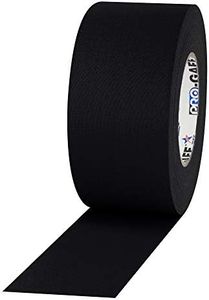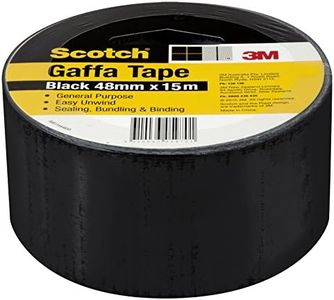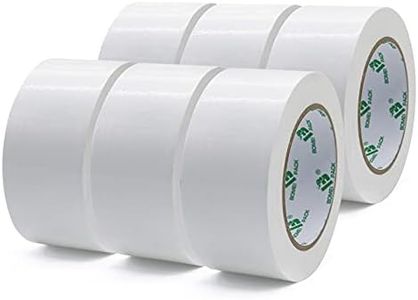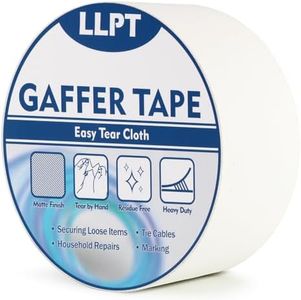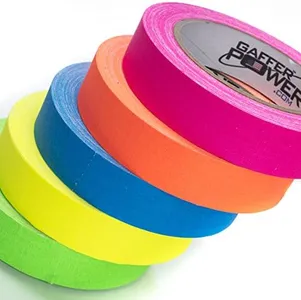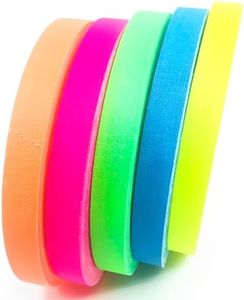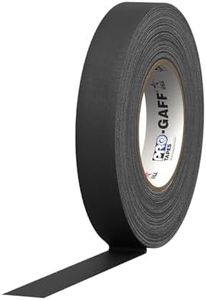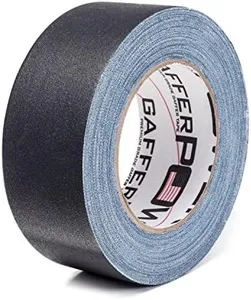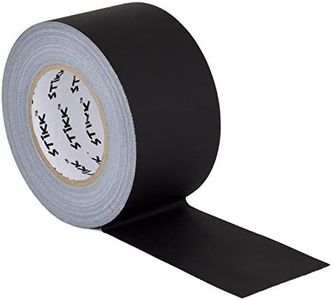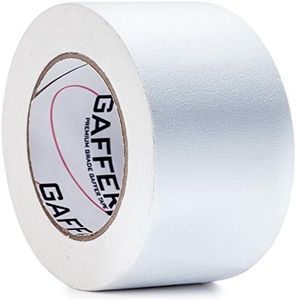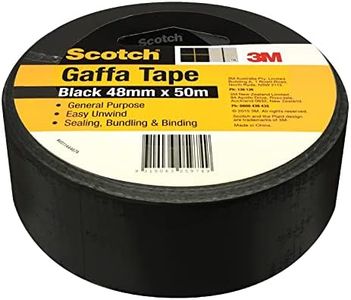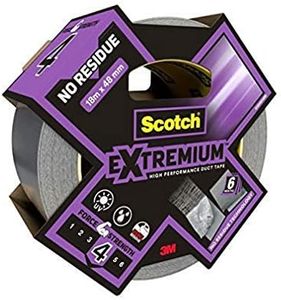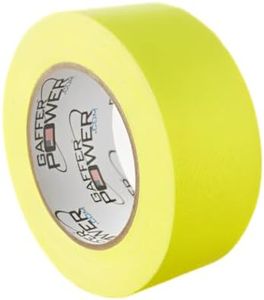We Use CookiesWe use cookies to enhance the security, performance,
functionality and for analytical and promotional activities. By continuing to browse this site you
are agreeing to our privacy policy
10 Best Gaffer Tapes
From leading brands and best sellers available on the web.By clicking on a link to a third party's website, log data is shared with that third party.
Buying Guide for the Best Gaffer Tapes
Choosing the right gaffer tape is essential for anyone involved in stage production, photography, filmmaking, or even for general household use. Gaffer tape is prized for its strength, flexibility, and ability to be removed cleanly without leaving residue. By understanding the critical specifications of gaffer tape, you can select the tape that best matches your specific application, ensuring it performs well under your particular conditions.Adhesive StrengthAdhesive strength refers to how well the tape sticks to various surfaces. Strong adhesive is important when you need the tape to stay in place securely, especially on rough or uneven surfaces. However, tape with very strong adhesive could leave residue or be hard to remove, while tape with weaker adhesive may not hold as securely. For temporary setups or sensitive surfaces, opt for moderate adhesive strength, while demanding environments may require higher tack. Consider your need for permanence and how often you need to remove or adjust the tape.
TearabilityTearability describes how easily you can rip the tape by hand. Good gaffer tape should tear cleanly and effortlessly in straight lines, both across and along its length, saving time and avoiding the need for cutting tools. Lower tearability might be suitable if you want extra durability, but it makes handling a bit more fussy. If you need to work quickly or in the dark, high tearability is a must-have for convenience and efficiency.
Surface Finish (Matte vs. Glossy)The finish of gaffer tape can be either matte or glossy. Matte finish reduces light reflection and glare, which is crucial in photography, film, and theater environments. A glossy surface may be acceptable for general utility purposes but can cause unwanted reflections under stage lights or cameras. If you work in environments where lighting control matters, always go for matte; otherwise, finish is less critical.
WidthWidth determines how large an area the tape can cover in one pass and how it handles certain tasks. Standard widths typically range from about 1/2 inch to 2 inches or more. Narrower tapes are easier to handle, better for subtle fixes, and ideal for marking, while wider tapes provide better holding power and are useful for securing cables or heavier items. Match the width to your main tasks: delicate, precise work favors narrow tape; heavy-duty or cable management needs wider tape.
ResidueResidue refers to the sticky material left behind after removing the tape. High-quality gaffer tape is designed to come off cleanly without leaving any residue, even after being applied for several days. This is important for preserving floors, walls, or expensive equipment. If you're taping to surfaces you must protect, prioritize tapes advertised as residue-free. For throwaway or outdoor situations, this may be less important.
DurabilityDurability covers how well the tape holds up under stress, movement, or varying weather conditions. More durable gaffer tape will resist tearing, stretching, and breaking, making it suitable for heavy-duty use, outdoor events, or long-term applications. Less durable tape may be enough for short indoor projects. Think about how tough your usage scenario is; if you'll be moving things over the tape, or it will get wet, choose higher durability.
